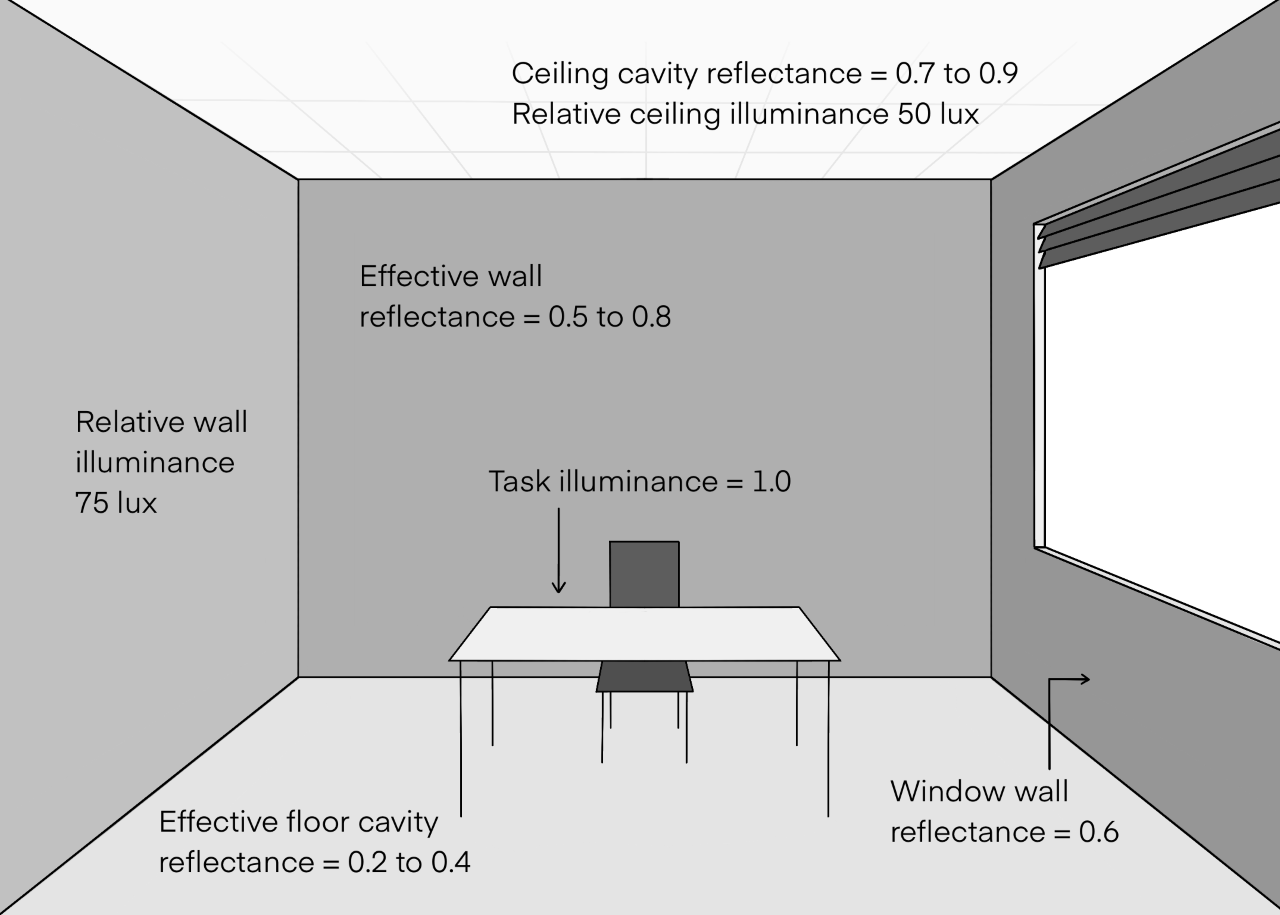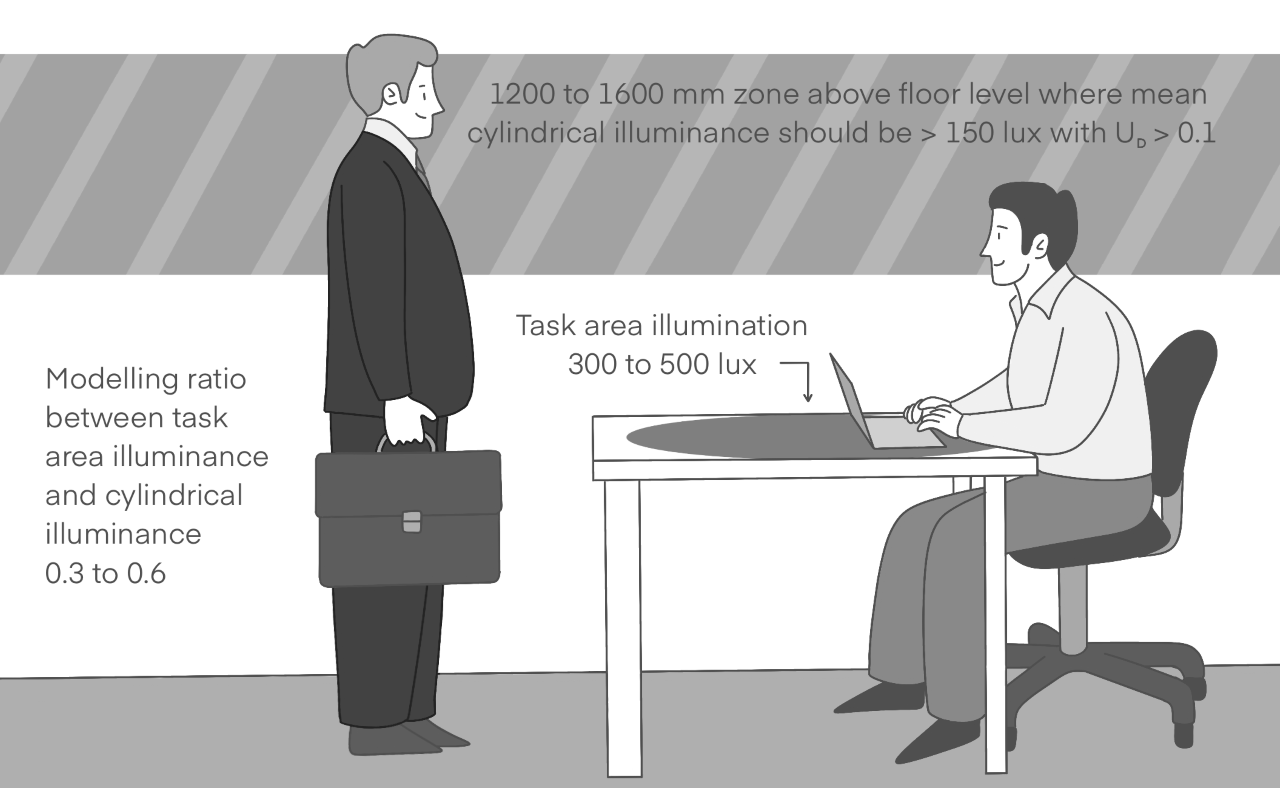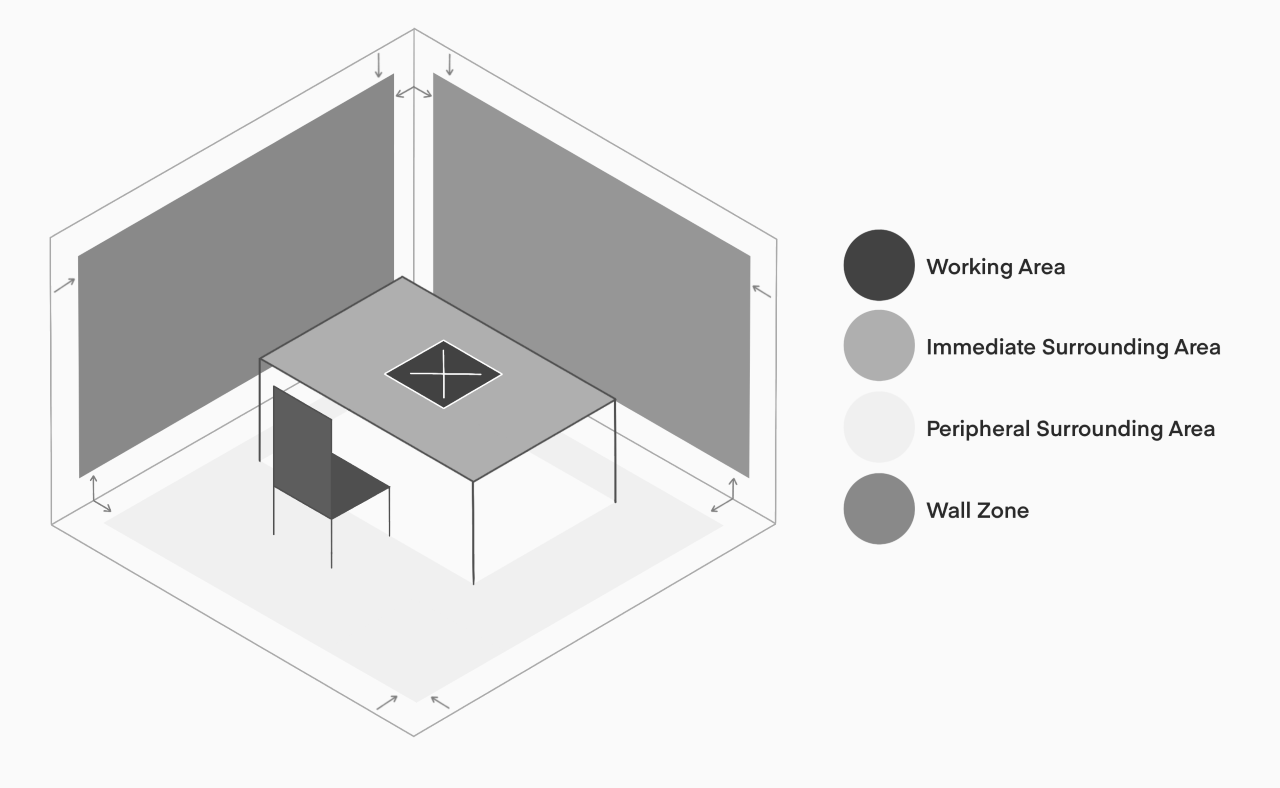Visual Comfort and Performance
Daylight and Energy Use
Shell & Core, CAT A and CAT B
Visual Comfort and Performance.
The guide recognises the importance of visual comfort when designing office lighting.
The first principle is to ensure a good balance of surface brightness. If the contrast is too high, it may cause fatigue. If the contrast is too low, the results will be dull and produce an uninspiring environment. Balance must be found in the field of view- ceilings, walls, floor and work surfaces.
Target reflectance factors following the BS EN 12464-1.

The latest standards are also introducing mean cylindrical illuminance and the modelling ratio as new criteria for ensuring that the space and its occupiers are lit adequately. This is important for all human communication. While average horizontal maintained illumination focuses on how much light is on the desk, the mean cylindrical illuminance is measuring how much light is falling on a person’s face.
According to BS EN 12464-1 it is required for good visual communication and should be calculated at the sitting/standing heights for the office space.

Visual performance
BS EN 12464-1 and SLL Code for Lighting expand on the concept of task illumination, mediate surround and task illumination.

Where the task area is not defined, BS EN 12464-1 allows the designer the choice of lighting the entire area to the recommended task illumination or to a lower level ( immediate surrounding area), allowing for the illumination to be increased locally. BS EN 12464-1 defines the average maintained task illumination in offices as 500 lux. LG7 recommends 300 lux as an average maintained task illumination for tasks using modern computers. Therefore, for general office use the task illumination should be a minimum of 300 lux with the ability to increase to 500 lux locally.
Glare
Glare in an office environment is an unpleasant sensation and can be discomforting for users. The primary factor causing glare from artificial lighting can be the luminance of the source, their apparent size and position in the field of view. These factors are calculated into Unified Glare Rating ( UGR).
The general office space should have a UGR rating of no greater than 19. Higher values are acceptable for circulation areas, breakout spaces and reception areas, where feature lighting is used.
Learn more with our Workplace Lighting Design CPD.
A comprehensive guide to workplace lighting design packaged neatly into a one hour slot? Sounds too good to be true, but it's not. Our Workplace Lighting Design CPD is accredited by CIBSE and The CPD Accreditation Service, and includes everything you need to know about the subject.

